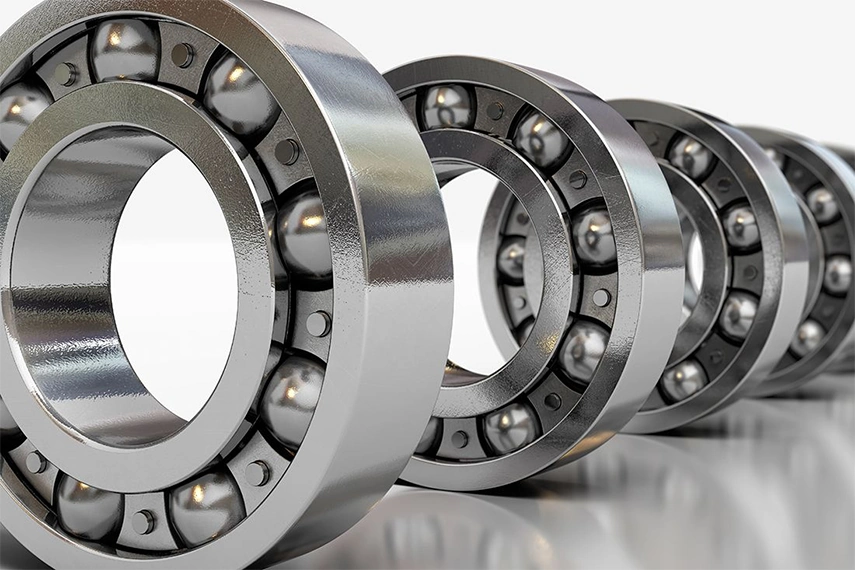DC Motor Horsepower Calculation
2024-08-05 17:31:55
Calculating the horsepower of a DC motor is essential for determining its capacity to perform work and ensuring safe and efficient installations. Horsepower (HP) is a unit of power that indicates the rate at which work is done. This article will provide a detailed, professional, and reliable guide to understanding and calculating the horsepower of DC motors, discussing its importance, the formulas involved, practical tips, and considerations for accurate calculation.
Understanding DC Motor Horsepower

Definition and Importance
Horsepower is a measure of a motor's power output. One horsepower is equivalent to 746 watts. In the context of DC motors, horsepower indicates the motor's ability to convert electrical energy into mechanical energy to perform tasks such as driving machinery, vehicles, and other equipment. Accurately calculating the horsepower is crucial for selecting the right motor for specific applications, ensuring optimal performance, and preventing overloads that could lead to equipment damage.
Basic Principles
DC motors convert electrical energy into mechanical energy through the interaction of magnetic fields. The primary components include the armature, field windings, commutator, and brushes. The power output, and hence the horsepower, depends on the motor's voltage, current, and efficiency.
Calculating DC Motor Horsepower
Fundamental Formula
The fundamental formula for calculating the horsepower of a DC motor is:
HP = V × I × η / 746
where:
- HP is the horsepower.
- V is the voltage in volts.
- I is the current in amperes.
- η is the efficiency (expressed as a decimal).
Steps for Calculation
- Determine Voltage and Current: Measure or obtain the voltage (V) and current (I) supplied to the motor. These values can often be found on the motor's nameplate or datasheet.
- Assess Motor Efficiency: Determine the motor's efficiency (η). Efficiency is the ratio of mechanical power output to electrical power input and is usually expressed as a percentage. Convert this percentage into a decimal for calculation purposes (e.g., 85% efficiency becomes 0.85).
- Apply the Formula: Plug the voltage, current, and efficiency values into the formula to calculate the horsepower.
Example Calculation
Suppose a DC motor operates at 230 volts, draws 20 amperes of current, and has an efficiency of 88% (0.88 as a decimal). The horsepower calculation result is about 5.43.
Alternative Method: Using Power Factor
For AC motors, power factor plays a crucial role in horsepower calculation. Although DC motors do not have a power factor, understanding this concept is beneficial for comprehensive knowledge. For AC motors, the formula considering power factor (PF) is:
HP = V × I × PF × √3 / 746
where √3 accounts for the three-phase power factor correction. This formula highlights the differences in calculating horsepower for AC and DC motors.
Practical Tips for Accurate Calculation
- Use Reliable Instruments: Ensure that voltage and current measurements are accurate by using calibrated and reliable instruments. Inaccurate measurements can lead to incorrect horsepower calculations, potentially resulting in motor selection errors.
- Consider Load Variations: Understand that motors may operate under varying load conditions. Calculate horsepower under typical operating conditions to ensure the motor can handle expected loads without risk of overload.
- Account for Efficiency Changes: Efficiency can vary with load and operating conditions. Use the efficiency value provided by the manufacturer for typical operating conditions or conduct tests to determine actual efficiency under specific conditions.
- Safety Margins: Incorporate safety margins in your calculations to account for unexpected increases in load or operational changes. This practice ensures that the motor can handle slight overloads without risk of damage.
Advanced Considerations
- Dynamic Performance: Consider the motor's dynamic performance characteristics, such as starting torque, speed variations, and response time. These factors influence the motor's ability to maintain horsepower under changing conditions.
- Thermal Management: Evaluate the motor's thermal management capabilities. Excessive heat can reduce efficiency and performance. Ensure adequate cooling and ventilation to maintain optimal operating conditions.
- Monitoring and Maintenance: Regularly monitor the motor's performance and conduct maintenance to ensure it operates within the calculated horsepower range. Implement predictive maintenance strategies to identify and address potential issues before they lead to failure.
Applications of DC Motor Horsepower Calculation
- Industrial Machinery: In industrial settings, accurately calculating the horsepower of DC motors ensures that machinery operates efficiently and safely. Motors driving conveyor belts, pumps, and other equipment must match the required horsepower to prevent underperformance or damage.
- Electric Vehicles: For electric vehicles, knowing the motor's horsepower is vital for achieving desired performance metrics such as acceleration, speed, and load-carrying capacity. Accurate calculations help in designing efficient and reliable drive systems.
- Robotics: In robotics, precise horsepower calculations ensure that motors can handle the demands of various tasks, from simple movements to complex operations. Proper motor selection based on accurate horsepower calculations enhances the robot's performance and reliability.
- Renewable Energy Systems: In renewable energy applications, such as wind and solar power generation, motors are used in systems requiring specific power outputs. Accurate horsepower calculations ensure that these systems operate efficiently and contribute to sustainable energy solutions.
Conclusion
Calculating the horsepower of DC motors is an essential task for professionals working with motor-driven systems. Accurate calculations ensure that motors are appropriately sized for their applications, enhancing efficiency, performance, and safety. By understanding the fundamental principles, employing reliable measurement methods, and considering advanced factors such as dynamic performance and thermal management, professionals can achieve precise and reliable horsepower calculations.
See What Lunyee Can Do For You
Contact Us
- 8619149417743
- +86-0371-5562 0274
- [email protected]
- Zhengzhou, Henan Province, China
- Mon-Fri: 9:00 - 18:00




